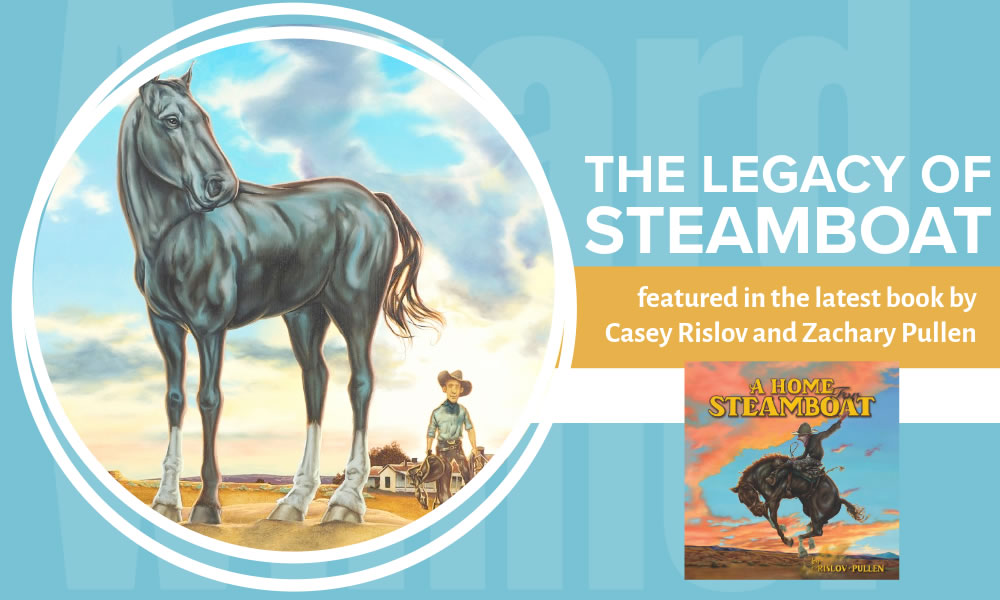Steamboat, Wyoming’s legendary bucking horse, wasn’t just any horse—he was a symbol of the West’s unbreakable spirit.
A Home for Steamboat, by Casey Rislov and Zachary Pullen, tells the inspiring story of this incredible horse. Perfect for young cowboys and cowgirls, the book captures the essence of Steamboat’s life and his lasting impact on Wyoming. Pre-order your copy of A Home for Steamboat to bring this Wyoming legend to life!
Born in 1896 near Chugwater, WY, he earned names like "King of Buckers" and "Old Outlaw Horse" for his unstoppable energy. His bucking skills wowed crowds at rodeos across the country, cementing him as an icon.
Steamboat’s legacy goes beyond rodeo fame. In 1936, his silhouette became the symbol of Wyoming, adorning license plates and logos. He was inducted into the National Cowboy Hall of Fame in 1975, continuing to represent the grit and independence of the Cowboy State.
Fun Facts about Steamboat & Significant Steamboat Moments
- Born on the Frank Foss Ranch in 1896 near Chugwater, WY
-
- Starred in rodeos from 1901-1907, including his debut at the Festival of Mountain and Plain in Denver
- Charlie Irwin had Steamboat from 1903-1912. Charlie met Steamboat at the Cheyenne Frontier Rodeo and put him in his own Wild West Show after his rodeo days.
- Immortalized in Wyoming’s license plate design since 1936
- The University of Wyoming adopted Steamboat as their athletics team logo in 1921. The picture used to create the bucking horse silhouette was the World Champion
About Charlie Irwin:
Charlie Irwin was a rancher, World Champion Steer Roper, and he created a wild west show. He helped produce the Cheyenne Frontier Days rodeos for the first 10 years. He was honored for his cowboy ways by being inducted in the Cowboy Hall of Fame in Oklahoma City in 1975. Charlie l
About Allen Tupper True
Allen Tupper True (1881-1955) was a famous artist who is known for paintings, illustrations and murals. True provided illustrations for magazines such as the Saturday Evening Post, Collier’s Weekly and Scribner’s Magazine. He created easel paintings that depicted the West. His murals can be found at many important historic buildings including the Wyoming State Capitol, Missouri Capitol, Colorado State Capitol, Colorado National Bank and the Brown Palace Hotel in Denver.
Allen Tupper True created the bucking horse logo we see now in Wyoming in 1935, when Governor Hunt commissioned him for an idea of putting a cowboy and bucking horse on the license plate to represent Wyoming as the cowboy state. The logo has been on Wyoming’s license plates since 1936. In 1936, the State of Wyoming obtained a copyright and adopted Allen’s logo artwork for the licensed state logo. University of Wyoming started to use Allen’s Tupper True’s copyrighted logo
for their logo.
The western landscapes taught Steamboat from the beginning this was his dream, as he bucked on the happiest and toughest of days.
This one horse stamped and stomped his silhouette into the symbol of the West. He has stood for one heartbeat of Wyoming early on, for both the land and its people. His strong willed hoofbeats and independent spirit of the West still beats strong today.
Steamboat’s story is a reminder that some spirits can never be tamed.
References, :

